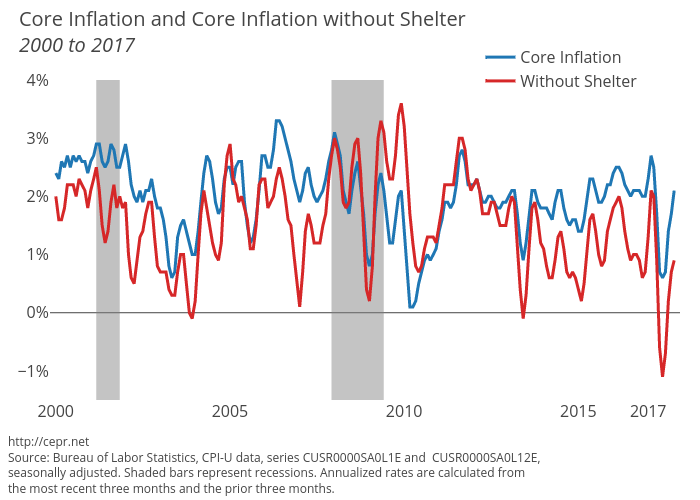Fact-based, data-driven research and analysis to advance democratic debate on vital issues shaping people’s lives.
Center for Economic and Policy Research
1611 Connecticut Ave. NW
Suite 400
Washington, DC 20009
Tel: 202-293-5380
Fax: 202-588-1356
https://cepr.net
November 15, 2017
Rent remains the main source of the core inflation. Rent proper increased by 0.3 percent in October and is up 3.7 percent for the last year. Owners’ equivalent rent has risen by 0.3 percent and is up 3.2 percent for the last year. The main reason for the difference is that the rent proper index often includes utilities, which have risen more rapidly in price than rent itself. A core CPI, that excludes rent, rose just 0.1 percent in October and is up 0.7 percent over the last year. For more, check out the latest Prices Byte.
